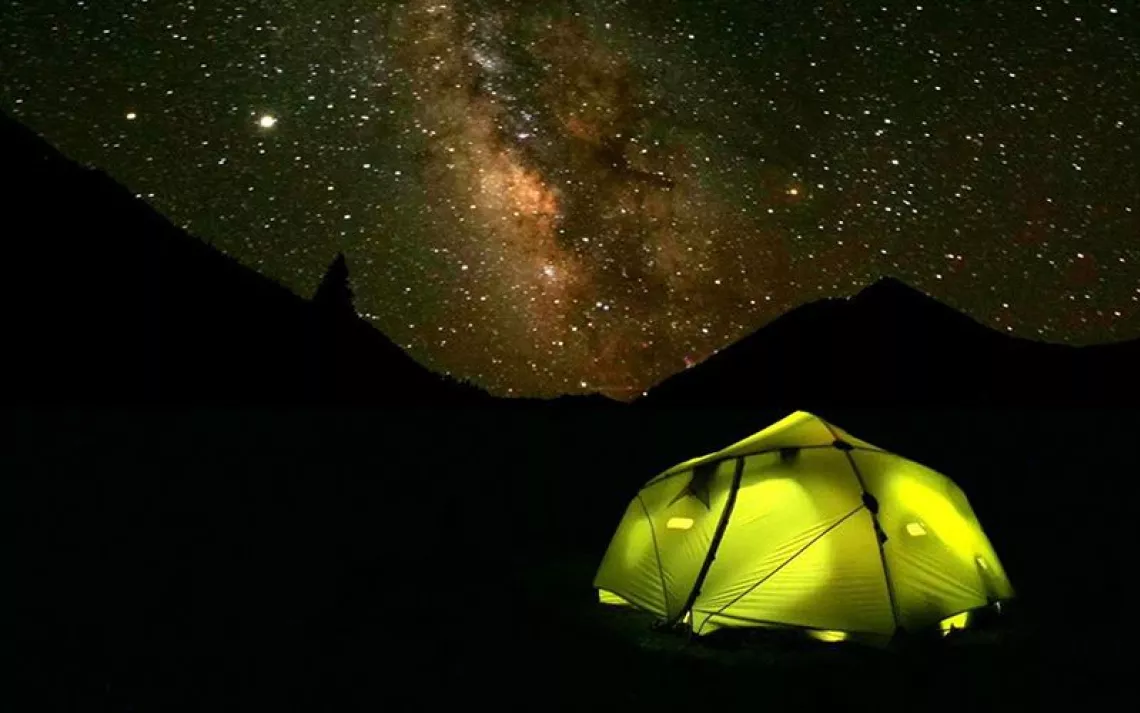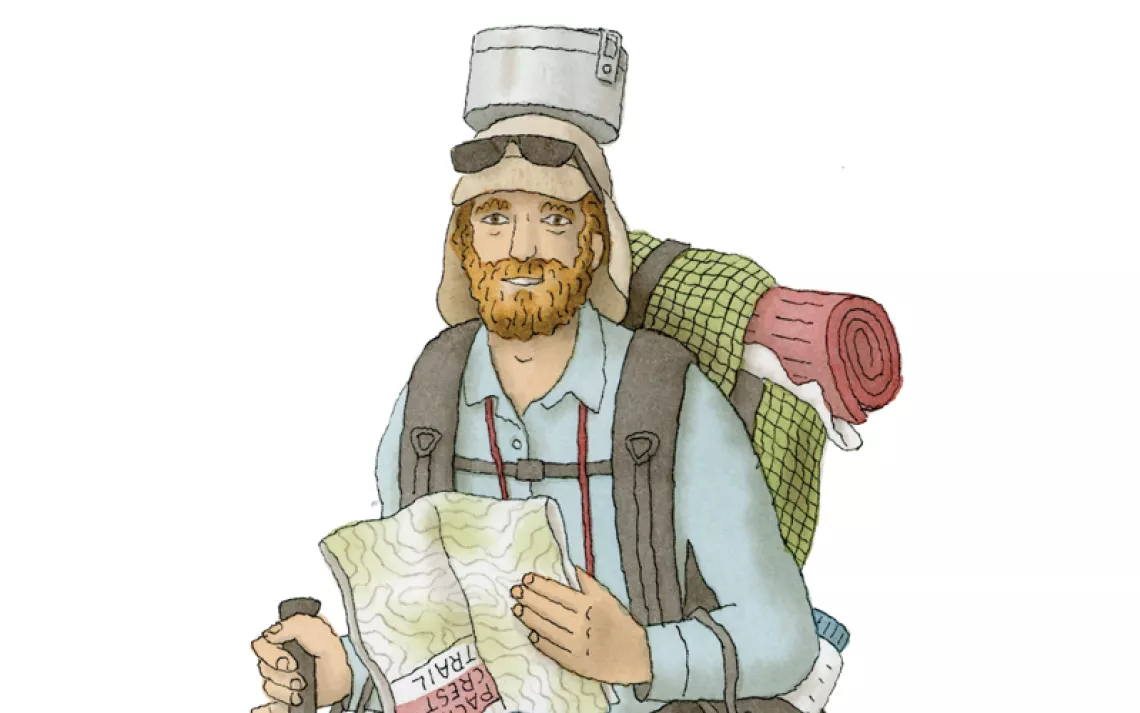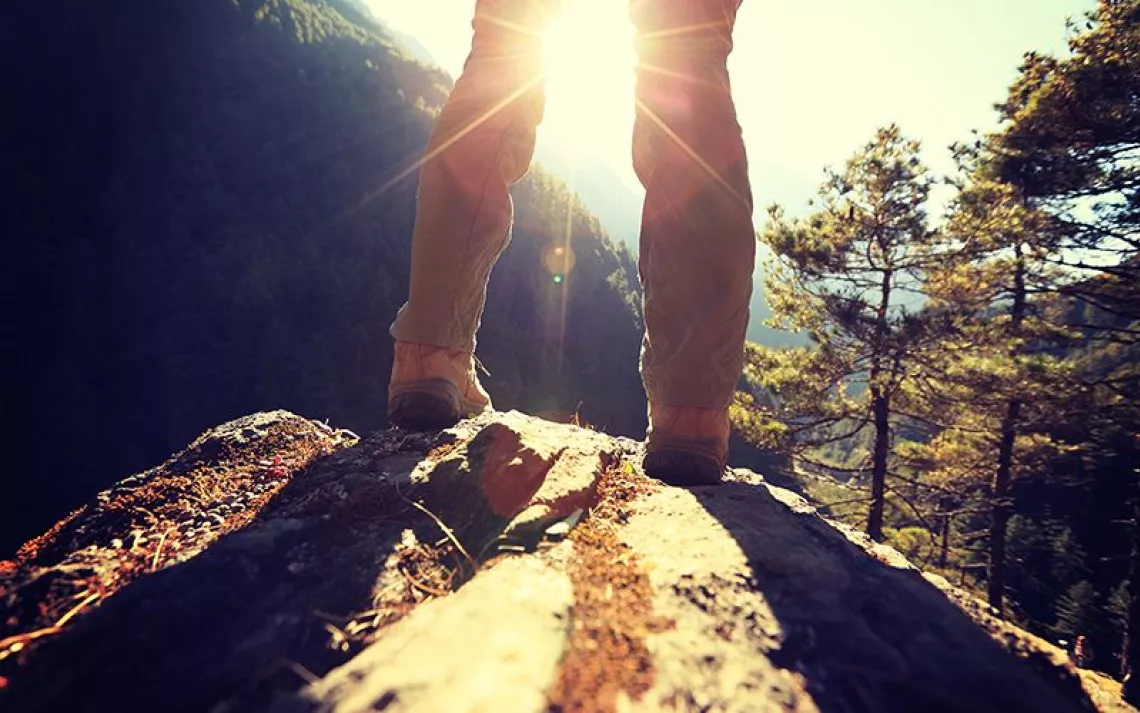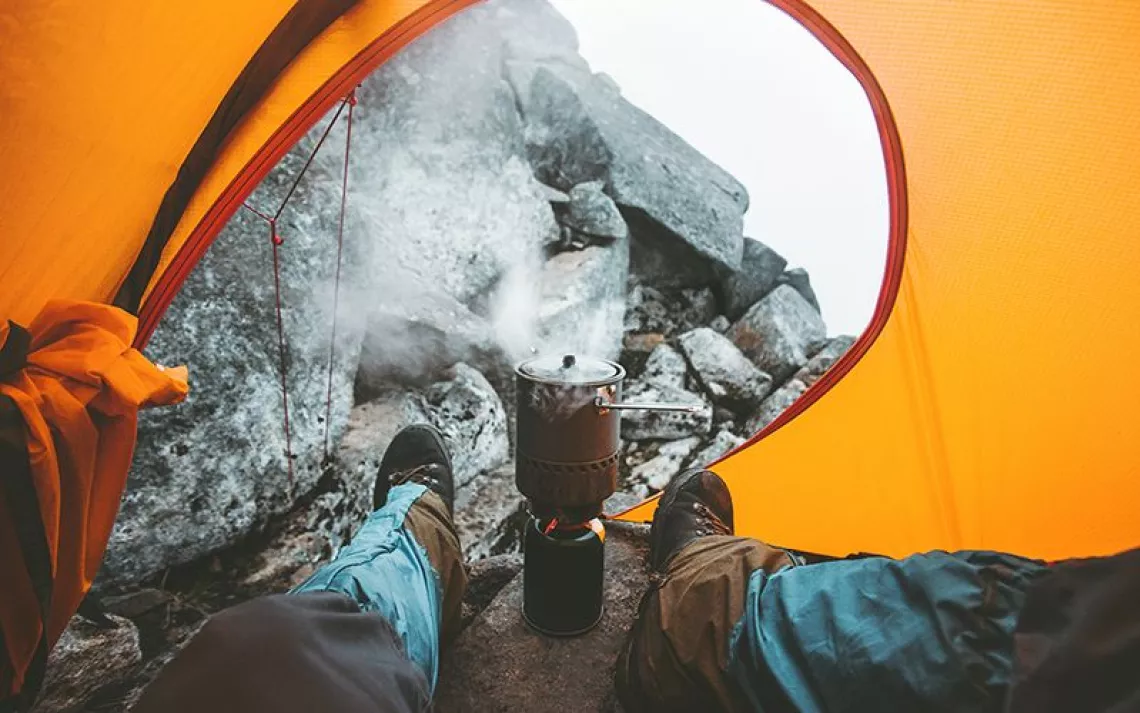First-Time Backpacking Basics
What you need to take your hiking to the next level

Photo by Drepicter/iStock
Backpacking, which combines hiking and camping, appeals to outdoor enthusiasts who want to grow their experience beyond the car campground and spend more time surrounded by nature. But the farther you are from the comfort and services of civilization, the more you have to rely on yourself as well as what you’ve packed. If you’re considering getting out on the trail for more than just a day hike, follow these tips to prepare for your new adventure.
Necessary gear
On a backpacking trip, everything needs to be carried in your pack, so compact and lightweight gear is essential. But before you start shopping for new gear, consider renting or borrowing some of the most expensive items, like a backpack, tent, sleeping bag, and sleeping pad. Many outdoor recreation stores (like REI) offer rental services, and the items are cleaned after each rental.
If you consider borrowing a pack from a backpacking friend, take it for a test run first. Load it with 25 to 30 pounds of gear and go for a long hike. You want the pack to be comfortable for your shoulders and hips. While ultralight packs may seem tempting, they also have less padding, so avoid them until you have more backpacking experience.
Choose a tent rated for three seasons at first, and if you’re backpacking with a friend, consider sharing a two-person tent—which weighs less than two one-person tents. Sleeping bags with synthetic fill are less expensive and more versatile than those with down, and sleeping pads provide not only cushioning but also insulation.
The simplest options to purify water obtained from lakes and rivers come in the form of tablets or drops, but water filters are becoming less complicated and more compact, so they can also be options. Kitchen supplies to consider packing: a single-burner camp stove, pots, pans, plates, cups, utensils, biodegradable soap, and a small towel.
Clothing
Before you buy new items, look through your closet for fitness clothing made with fabrics like nylon and polyester. These fabrics wick moisture away from your skin and dry quickly. You may already have all you need for your first backpacking adventure.
Hiking boots are among the most important clothing items, so if you’re investing in a new pair, make sure you work with a footwear specialist to find the right size and fit. Bring any socks you plan to wear, and wear them as you try on new boots. Before you use them for backpacking, break them in by wearing them in the house, around the block, and on day hikes.
I once made a series of mistakes in choosing hiking boots shortly before attempting a two-day climb of California’s Mt. Shasta. I hadn’t spent much time talking with the salesperson about the activity I’d planned, I bought the boots without allowing much time to break them in before the adventure, and I hadn’t thought to trim my summer-length toenails. I didn’t realize it was a mistake until the hike down from Shasta’s 14,179-foot summit, after my toes hit the front of my boots with each step. Not only was it painful, but I also lost two toenails from the impact.
As for other clothing items, layer them in categories: base layers, hiking clothing, insulation, and weather wear. Base layers like long underwear and insulation layers like fleece and a puffy jacket help keep you warm. Hiking clothing is what you’ll wear during the day and may include a hat for sun protection. Weather wear, like a waterproof jacket and pants, help protect you from the elements.
Bring a small repair kit with a multitool, duct tape, zip ties, utility cord, safety pins, needle and thread, extra batteries and bulbs, side buckles, adhesive patches, webbing straps, tent pole sleeves, and stove repair items.
Food and drink
Plan your food needs before your trip begins. To minimize weight in your pack, all-in-one or just-add-water meals are ideal, and ample snacks are often better than full lunches; consider trail mix, dried fruit, and high-protein energy bars. While you want to avoid bringing too much food, a little extra is far better than not enough.
While it’s a wonderful feeling to chow down on your favorite snack out in the wilderness, consider the weather forecast when you choose and pack your food items. I have planned backpacking trips in the heat of summer when I remembered to bring all the right clothing and camp items I’d need in warm temperatures, but then forgot about it all when I packed a couple of chocolate bars. Hot melted chocolate that sticks to the wrapper (and may also ooze into the rest of your pack) isn’t a great treat when you get to camp.
To avoid attracting wildlife and possibly losing food to rodents or large mammals like bears, secure it (as well as scented items like lotion) in a bear canister or a stuff sack hung from a high tree branch by a cord—so you can access it without having to climb the tree. Because you know what else can climb trees? Bears.
Destination choice
Consult experienced backpacking friends, hiking club members, or employees of outdoor recreation stores to get their recommendations. You may be inspired by the idea of choosing a life-goal trail like the John Muir, Pacific Crest, or Appalachian Trail, but your first backpacking trip is not the time to aim high. Choose an easy destination close to home that may be too easy for your fitness level. It’s better to complete a backpacking trip encouraged to do more rather than discouraged to try again.
Remember that traveling with a heavy pack will cause you to walk slower, so your first outing may take longer than you think. Aim for maximum hours of daylight so you can reach camp before dark, and choose a trail and camp that’s well-traveled and established so there’s help available if you need it. Having water from a large, nearby source (like a river or lake) is ideal because small water sources aren’t always reliable.
Be sure to check weather and climate conditions before you go. As the weather warms in spring and early summer, we may be tempted to hit the trail as soon as possible. But snow lingers in some areas, especially at high elevations, and it’s best to be prepared for everything you’ll encounter. I’ve even pushed off backpacking trips by a month or so after learning that the snow hadn’t melted as quickly as it had in prior years. Luckily, I remembered to check before I packed everything and started to drive to the destination, rather than finding out once I’d arrived and wasted my time.
Trip conditioning and preparation
All the above-mentioned ways to prepare will mean nothing if you’re not physically and mentally ready for a backpacking trip. Do some day hiking with a fully loaded pack on trails with similar mileage and elevation as the trail you plan to backpack. Practice using your gear and navigating using a map and compass (because cellular dead zones abound in the wilderness), learn about animal safety and basic first aid, and check whether you’ll need to obtain any permits.
If you’re not already familiar with the seven Leave No Trace Principles, study up and make plans to follow them on your trip. When you start off practicing these skills, the outdoors will remain beautiful and wild for the future of all of us: humans, wildlife, and the ecosystem.
Finally, before you embark on your first adventure, leave a trip plan with a friend. Tell them where you’re going, when you plan to be back, and be sure to contact them when you do return. Maybe next time, you can bring them along.
 The Magazine of The Sierra Club
The Magazine of The Sierra Club



